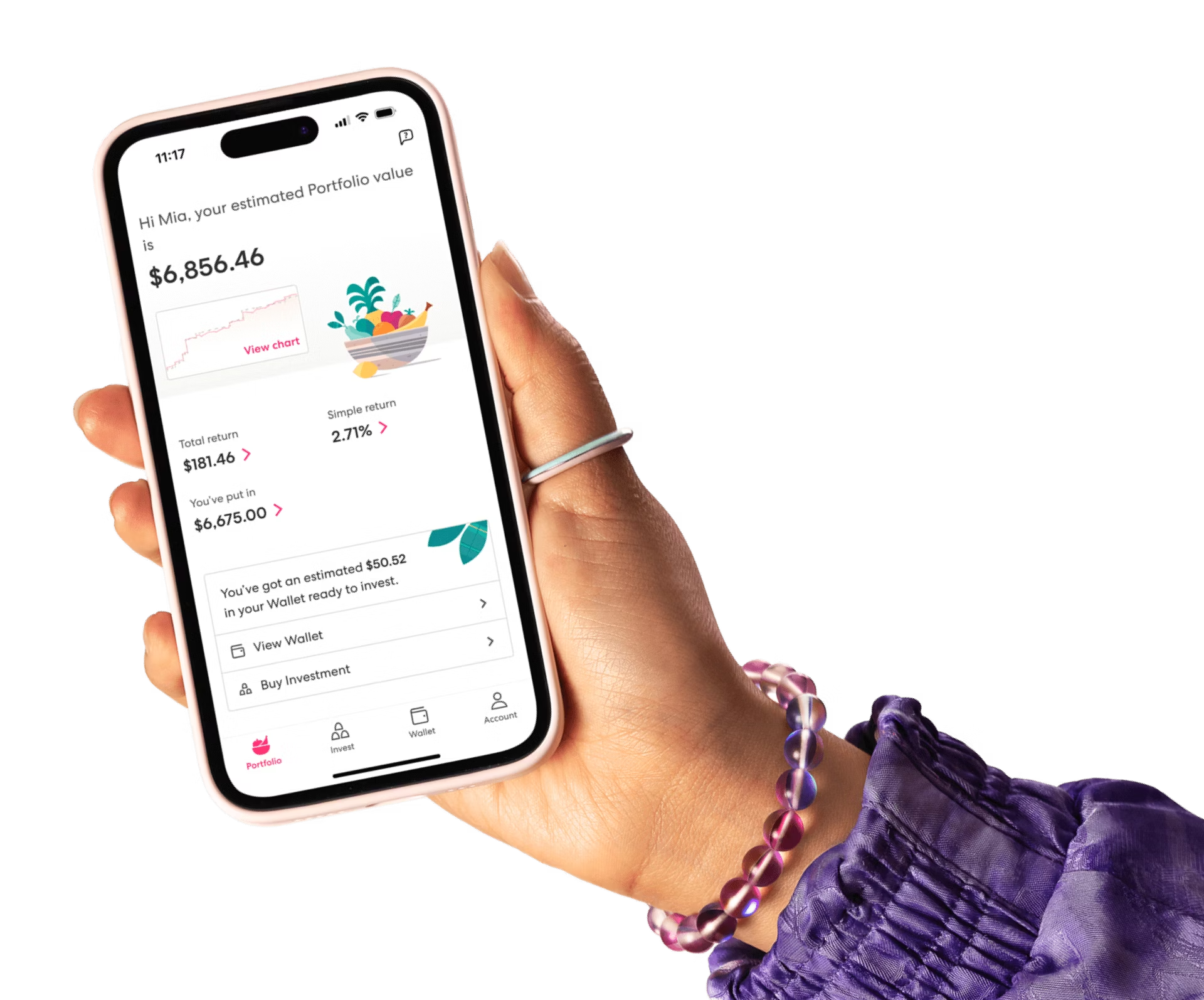Getting started: Investing and saving for kids
Ruth, the Central Otago-based personal finance writer behind The Happy Saver blog and podcast, shares her guide for getting kids started with money and investing.

In this series, Ruth shares her own experiences of teaching her 12-year-old daughter about money. In Part 1, Ruth explored how to talk to kids about money. In Part 2, Ruth shared how she gets her daughter more involved with money.
We all want to set our kids on the right financial path, but it can be hard to know where to start. In this article, I’ll share my experiences of how to create a great money structure for kids to take over as they get older and start making their own financial decisions. Over time, they’ll add to it and make it their own, but first off, it starts with you!
Apply for an IRD number
One of the very first actionable steps that I took after my daughter was born was to apply for her IRD number so that I could begin investing on her behalf. Sorting out the paperwork early on helps to enable all the other tax-related events in life, like:
opening a bank account
joining a KiwiSaver scheme
investing
paying tax on earned income, etc.
When you register the birth of your bundle of joy, you can apply for their IRD number at the same time, or you can just go to the IRD website when you’re ready to apply.
Set up a KiwiSaver account
The second thing I did for my baby daughter was to immediately sign her up to a low-fee, high-growth KiwiSaver fund and start an automatic monthly payment.
Now, 12 years later, these regular deposits and investment returns are starting to take effect and her balance is growing year on year. She won’t be eligible for the government contribution of $521 per year until the age of 18, but by the time she is, she’ll have a tidy sum set aside and these additional payments will accelerate that growth. When she starts to earn her own income, she’ll take over these payments and my contributions will cease.
My baby will retire one day, and by starting young, she’ll maximise the benefits of both compound returns and time—my two favourite things!
Save for future needs
If you’re a parent, you may remember the cost of preparing for your first child—of wandering around the baby stores and realising that you could spend as much on a baby buggy as you could on a car! The costs can really mount up, especially once they start school.
Early on, I opened a savings account for my daughter’s future needs. I put a small amount aside each week. Over the years, the account has built up and has been dipped into many, many times to pay for child-related expenses such as school uniforms, books, camps, or tech. These costs will always come up, so it pays to start planning for them really early to avoid putting stress on your household budget.
Invest for kids early, contribute regularly
The final ‘big’ thing I set up was an investment portfolio in her name—which I contribute to each month, and has quietly grown over the years. The intention is to pay for (or at least offset) the things my daughter may do once she finishes her secondary schooling:
Tertiary education
Starting a business
A house deposit
I honestly have no idea what she might want to do, but I consider my input into this portfolio as a ‘head start’ on those big expenses that all young adults face. Once again, when she starts to earn her own income, I’ll stop contributing and she’ll start managing the portfolio herself.
Create a simple structure and help kids stick to it
I’ve set up this simple structure and routine for my daughter’s money from a very young age, allocating money to the right places to be used at different stages in her life. We spend the rest of our time together making sure that she has the financial education to be able to manage her money and investments well. We’re working towards her taking complete ownership of her finances under our guidance before she leaves home.
We’ve always made her fully aware of each account, and little by little, she’s understanding how and why they’re there. She’s now added a bank account of her own, and invests her pocket money each Monday. When she receives any income from any source, we guide her in how to allocate it.
Watching her put each little lesson she’s learnt into practice is amazingly rewarding to watch!
Build up those core money skills each day
We each put time into teaching kids the skills to get them through life—these lessons need to be taught ‘a little and often’. Kids don’t learn to cook by frying an egg once and then calling themselves a master chef. Instead, they practice a little and often, break a few eggs, trash the kitchen along the way, and slowly build up their skills. Money education is exactly the same—it’s about building up core skills, repeating them often, making the odd mistake, and moving forward.
In our house, when the time feels right, we talk about the daily costs of life, her future, and what experiences she might face:
Polytech, university, work?
Flatting?
Travel?
Starting a business?
Homeownership?
We discuss what each of these might cost and how she might plan for them in the years ahead. We talk about FIRE (Financial Independence, Retire Early) and discuss the various ways you can experience life that may or may not include working a 9-5 job. All of these conversations help her think about the choices she makes right now. Eventually, she might work out for herself that the latest phone that costs $1,800 may not seem quite as worth it if she can buy a plane ticket or cover rent for the same amount!
Theory in action
After a full first week of the school holidays where she’d visited whānau in the city, used her own money to pay for a few activities, and hit the mall on the hunt for a handbag (oh dear, so it begins), I mentioned to my daughter that it might be a good time to check her bank account.
“Oh man.” she said as she shook her head, “It’s gonna be bad. I’ve been using my card heaps, but it was fun!”
“Uh huh,” I agreed, “Just remember that you had budgeted and planned for this trip, so it’s okay to spend. But you might need to think about earning a bit to build it back up. My car needs a clean if you’re up for it? I’ll pay you $5.”
“And I have to invest half, right Mum?”
“Yep, absolutely!”
“Can I clean Dad’s car too?”
“Yep, you sure can!”
Bingo!
She sat on my knee and logged into her bank account to check her balance. I asked her to guess how much it had dropped by, and when she looked, she was more or less spot on, which tells me that she’d been mentally budgeting as she spent her money during her holiday. She then quickly navigated her way around her account, checked each transaction, and told me what it was for.
Finally, she reminded me that Dad had said we would pay for her ice skating session, and that I needed to reimburse her $15... Then she logged off and went about her business without a second thought, knowing that she had not overspent and had her banking under control.
At just 12 years old.
Money can be a huge source of stress for so many adults, so let’s empower kids as early in life as we can to feel confident, motivated, and in control of their money. One day, my daughter will have full control over both the money we’ve invested for her and the income she’ll make herself. I want to know that dealing with money will continue to be a positive experience that she’ll enjoy.
Ok, now for the legal bit
Investing involves risk. You aren’t guaranteed to make money, and you might lose the money you start with. We don’t provide personalised advice or recommendations. Any information we provide is general only and current at the time written. You should consider seeking independent legal, financial, taxation or other advice when considering whether an investment is appropriate for your objectives, financial situation or needs.
Join over 800,000 investors




